
U.S. Marines participate in an Iwo Jima pre-invasion briefing, February 1945. The 8-square-mile island, about halfway between mainland Japan and U.S. bases in the Mariana Islands, was considered strategically important as an air base for fighter escorts supporting bombing missions against Japan. DoD photo
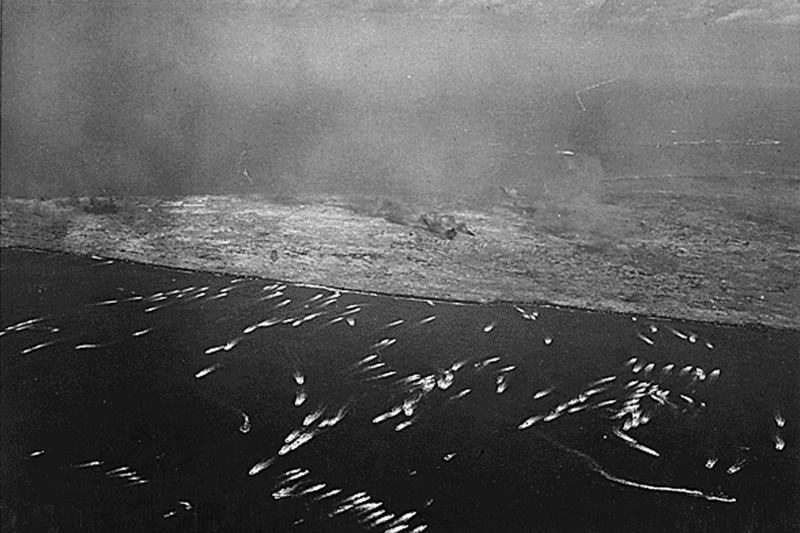
The first wave of U.S. troops assault the island of Iwo Jima aboard landing craft, Feb. 19, 1945. The initial invasion of U.S. Marines with the 4th and 5th divisions followed U.S. naval bombardments and weeks of intensive air assaults. DoD photo

Debris and the wreckage of landing craft and wheeled vehicles litter an Iwo Jima beach. DoD photo

Wrecked vehicles litter an Iwo Jima beach. DoD photo by U.S. Navy Petty Officer 3rd Class Robert M. Warren

U.S. Marines with the 4th Division fire on enemy positions from the black sands of an Iwo Jima beach in February 1945. DoD photo

U.S. Marines with the 5th Division inch their way up a slope on Red Beach No. 1 toward Mount Suribachi, Feb. 19, 1945. DoD photo

Five U.S. Marines and a Navy corpsman raise a flag on top of Mount Suribachi, Feb. 23, 1945. The iconic photograph, taken by AP photographer Joe Rosenthal and recreated in the U.S. Marine Corps War Memorial, captured the second U.S. flag-raising atop the mountain that day. Photo courtesy of National Archives and Records Administration

A U.S. plane flies above Iwo Jima in February 1945. DoD photo by U.S. Navy Capt. Edward J. Steichen

Wounded U.S. Marines are helped to an aid station by Navy corpsmen and fellow Marines on Iwo Jima in February 1945. By the end of the 36-day battle, American casualties numbered more than 26,000, including 6,800 dead. DoD photo

U.S. Marine Corps Pfc. Rez P. Hester, with the 7th War Dog Platoon, 25th Regiment, takes a nap while Butch, his war dog, stands guard on Iwo Jima in February 1945. DoD photo

U.S. service members carry a Japanese prisoner on a litter from a stockade to be evacuated and treated for malnutrition on Iwo Jima, Feb. 23, 1945. Casualties on both sides were heavy; only a small fraction of the roughly 21,000 Japanese fighters on the island survived the battle. DoD photo
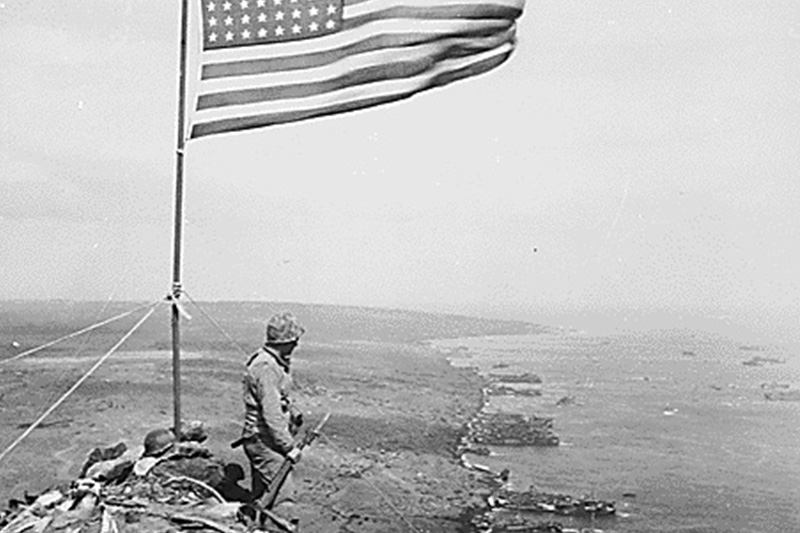
A U.S. flag waves over Iwo Jima from the crest of Mount Suribachi in February 1945. DoD photo
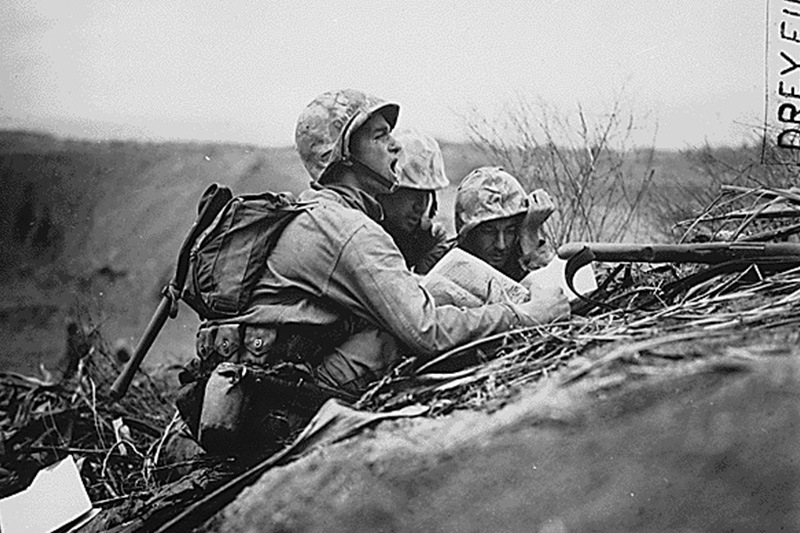
An observer who spotted a Japanese machine gun nest finds it on a map to convey the location information to fellow troops on Iwo Jima in February 1945. Instead of building a barrier to stop U.S. troops at the beach, Japanese defenders fortified the interior of the island. DoD photo

Left to right: U.S. Marine Corps Pfcs. Willie J. Kanody, Elif Hill and John Alexander rest on an Iwo Jima beach in March 1945. DoD photo
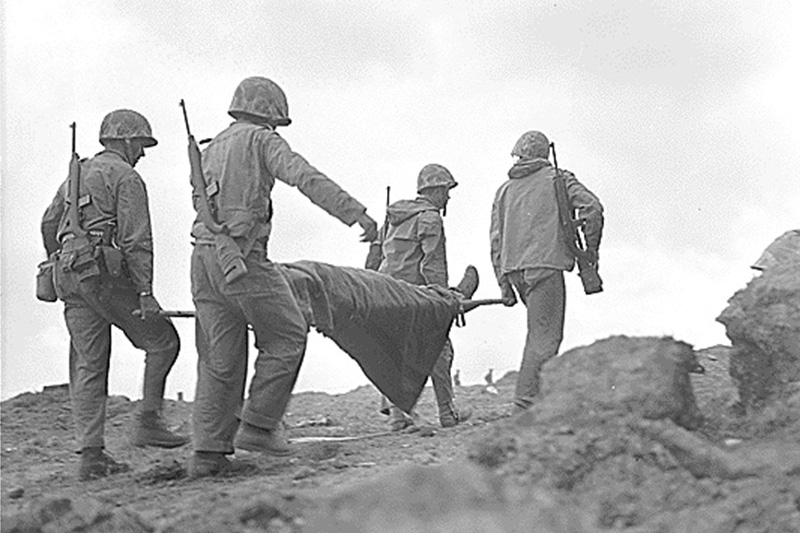
U.S. service members evacuate a wounded Marine from the front lines for medical treatment on Iwo Jima in March 1945. DoD photo

U.S. troops near Coast Guard and Navy landing craft unload supplies on the blackened sands of Iwo Jima, a few hours after the Marines had wrested their foothold on the vital island in March 1945. DoD photo

U.S. soldiers gather by a vehicle on Iwo Jima, March 1945. The Army’s 147th Infantry Regiment assumed ground control on the island April 4, 1945, relieving the largest group of Marines committed in combat in a single operation during the war. DoD photo

Injured Marines await evacuation to Guam in March 1945. DoD photo
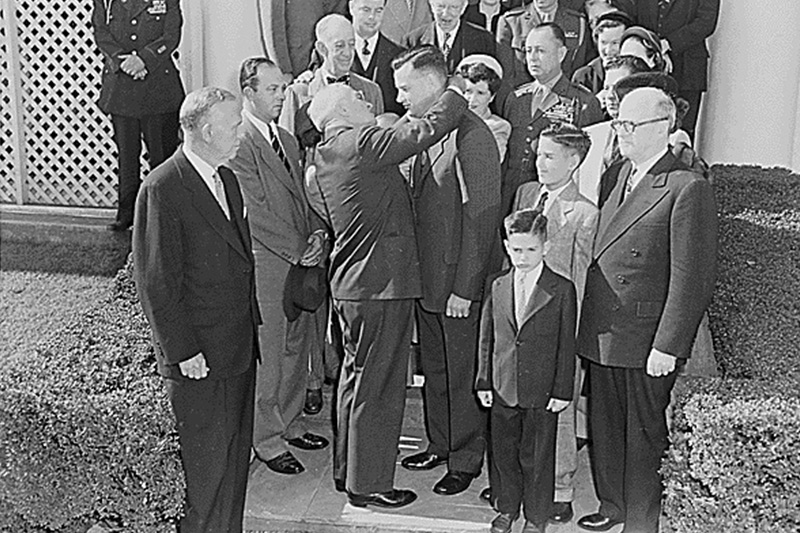
President Harry S. Truman presents U.S. Marine Corps Col. Justice M. Chambers with a Medal of Honor for heroism on Iwo Jima in 1945, as Defense Secretary George C. Marshall, left, and members of the colonel's family look on, Nov. 1, 1950. More Medals of Honor were awarded for Iwo Jima than for any other operation during the war—a total of 27. DoD photo